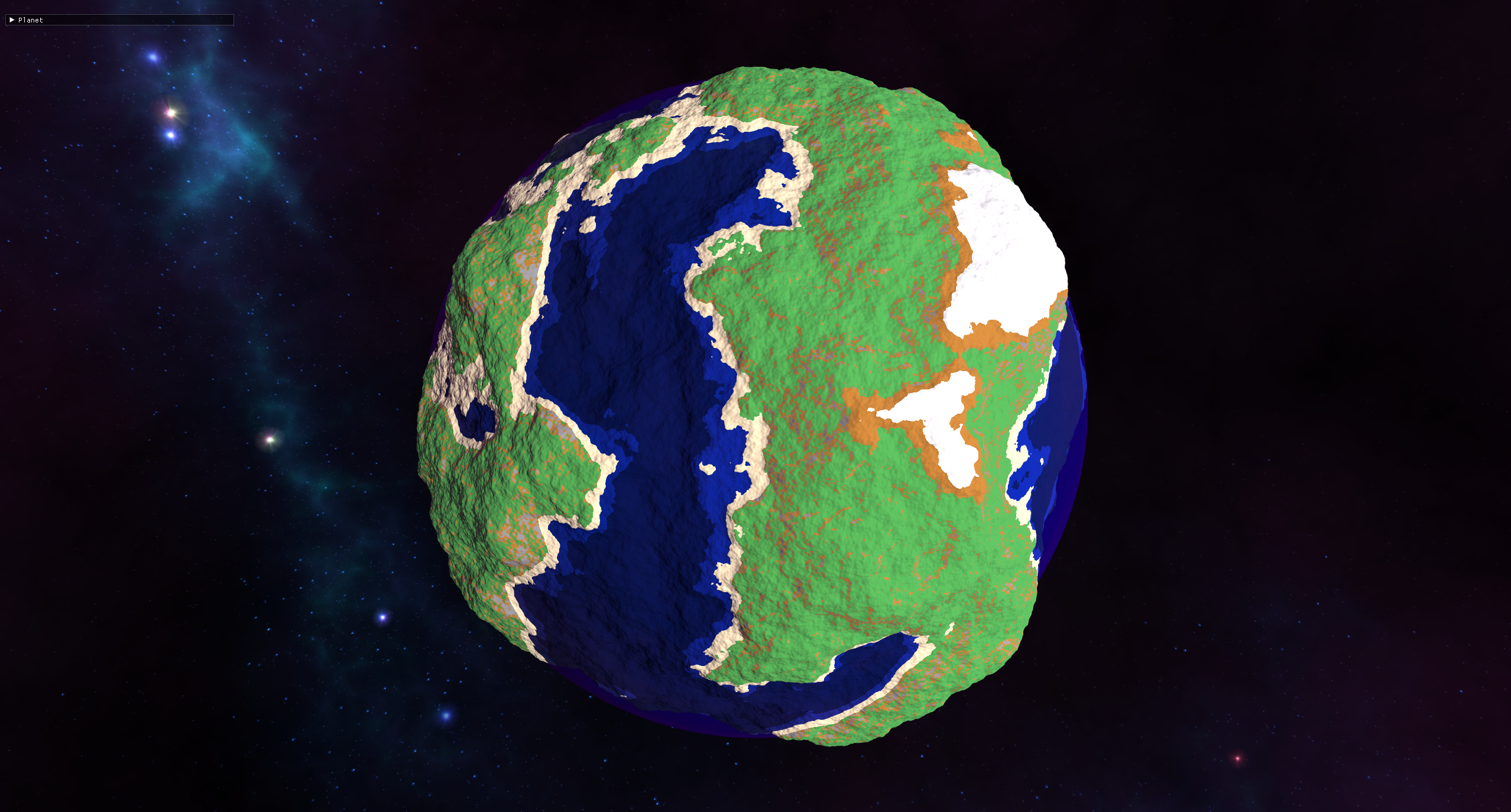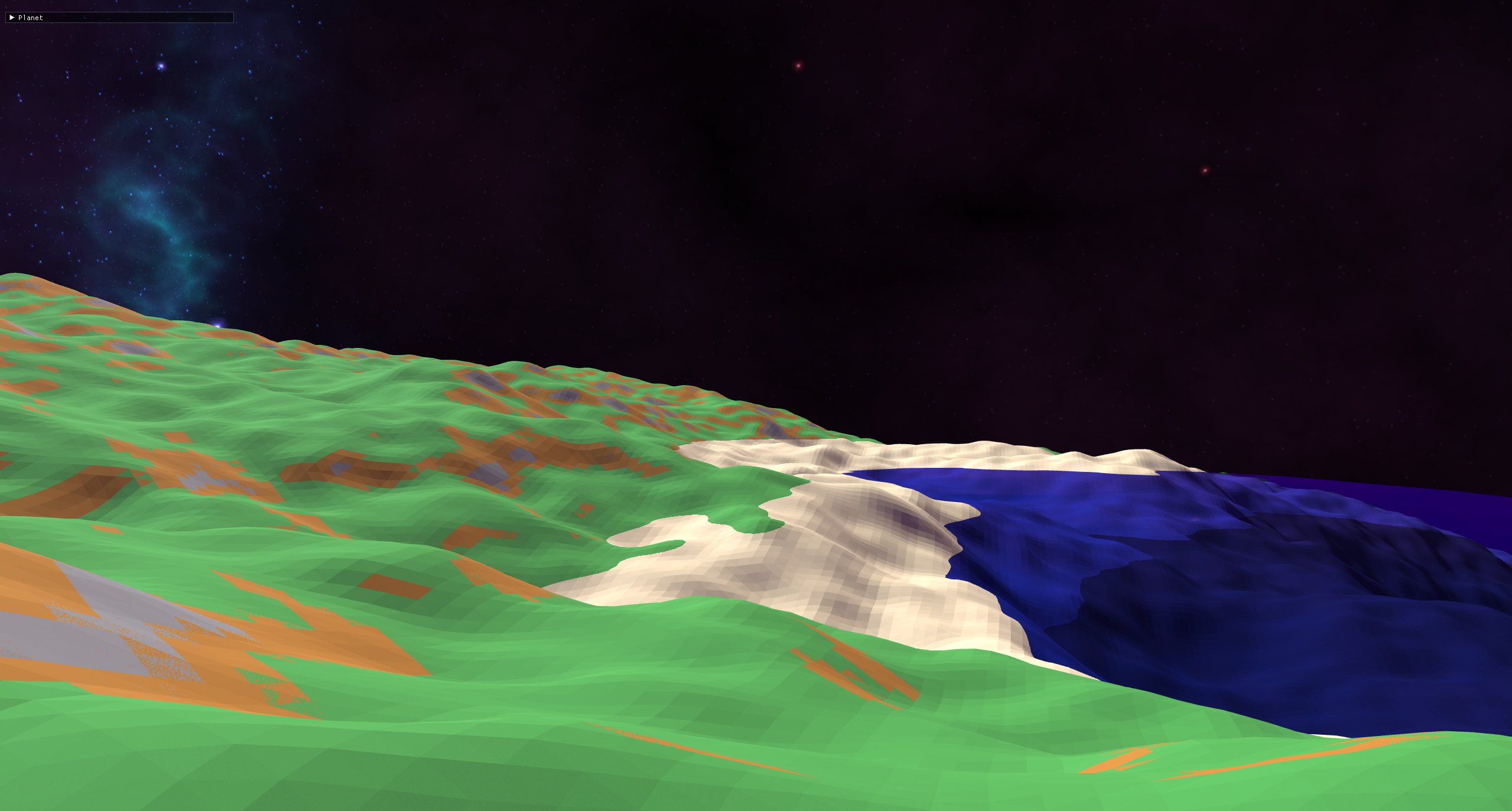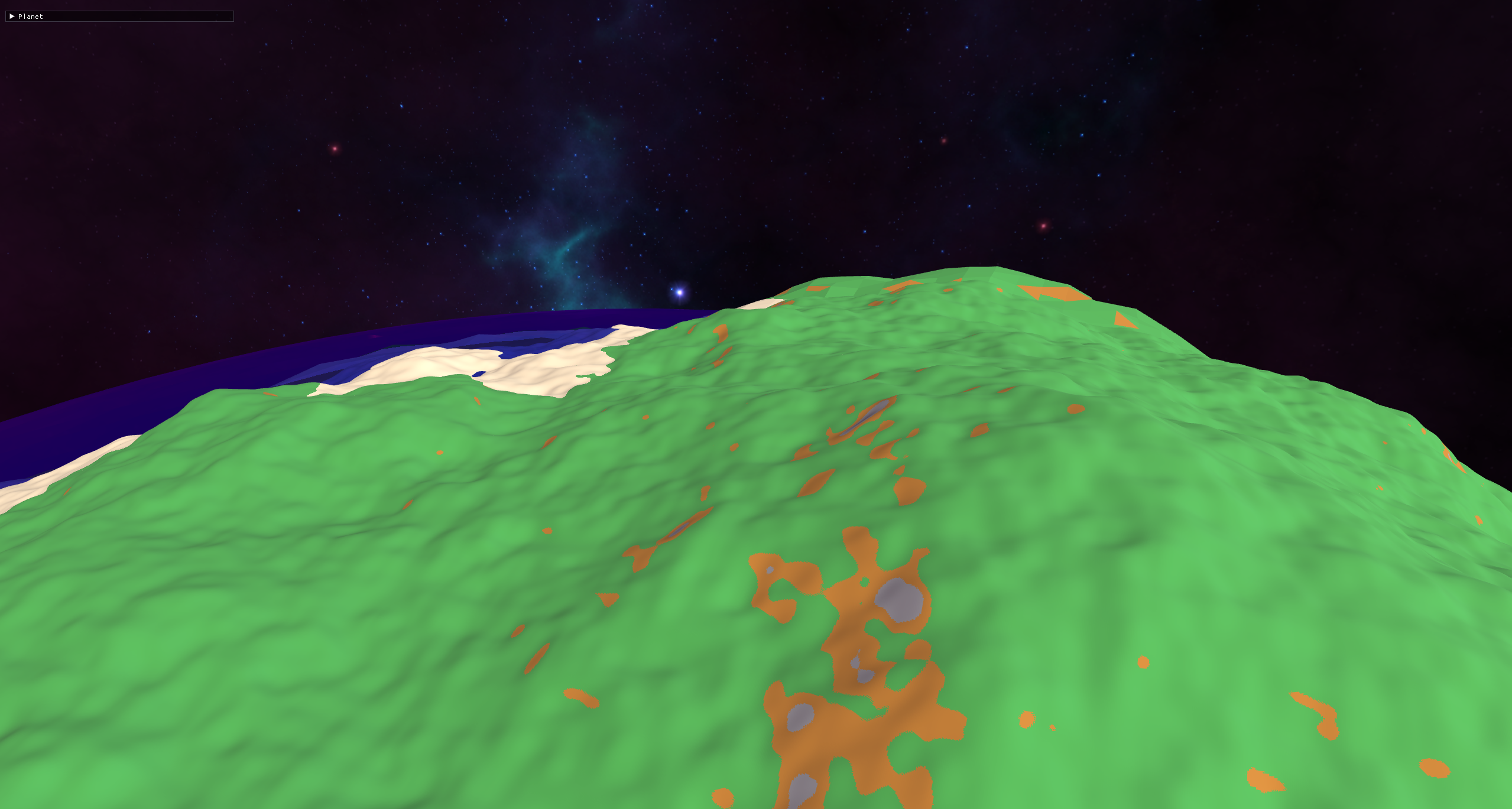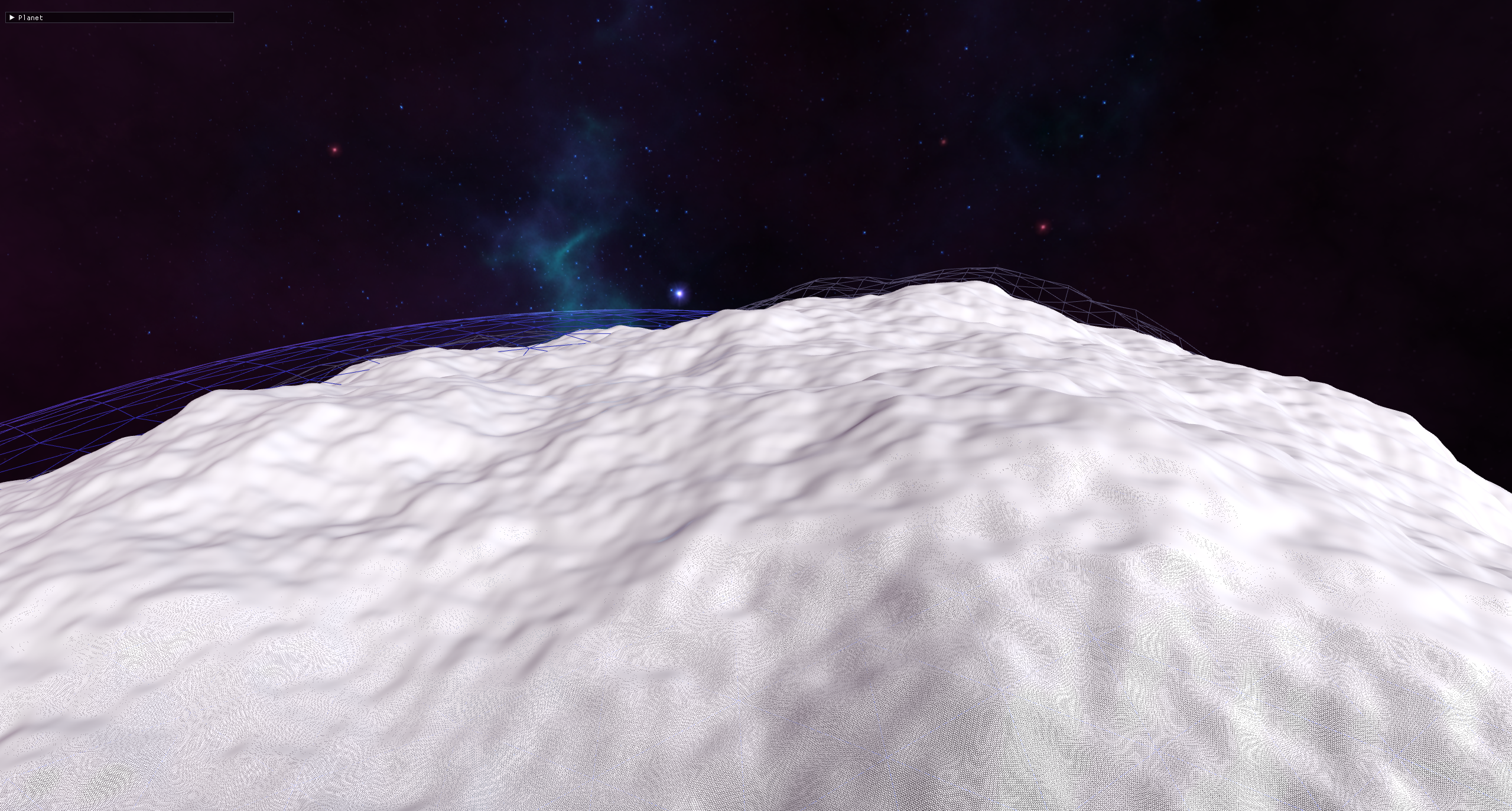
The Icosphere
The planet is created at runtime by starting with a 20 sided icosahedron, and subdividing each of its faces recursively to a preset LOD. There are controls in the GUI for LOD, Noise frequency, octaves, and a toggle for the CLOD system.
The terrain is coloured using a pixel shader, that measures both the elevation, and steepness of the geometry to choose a colour for each given pixel.


